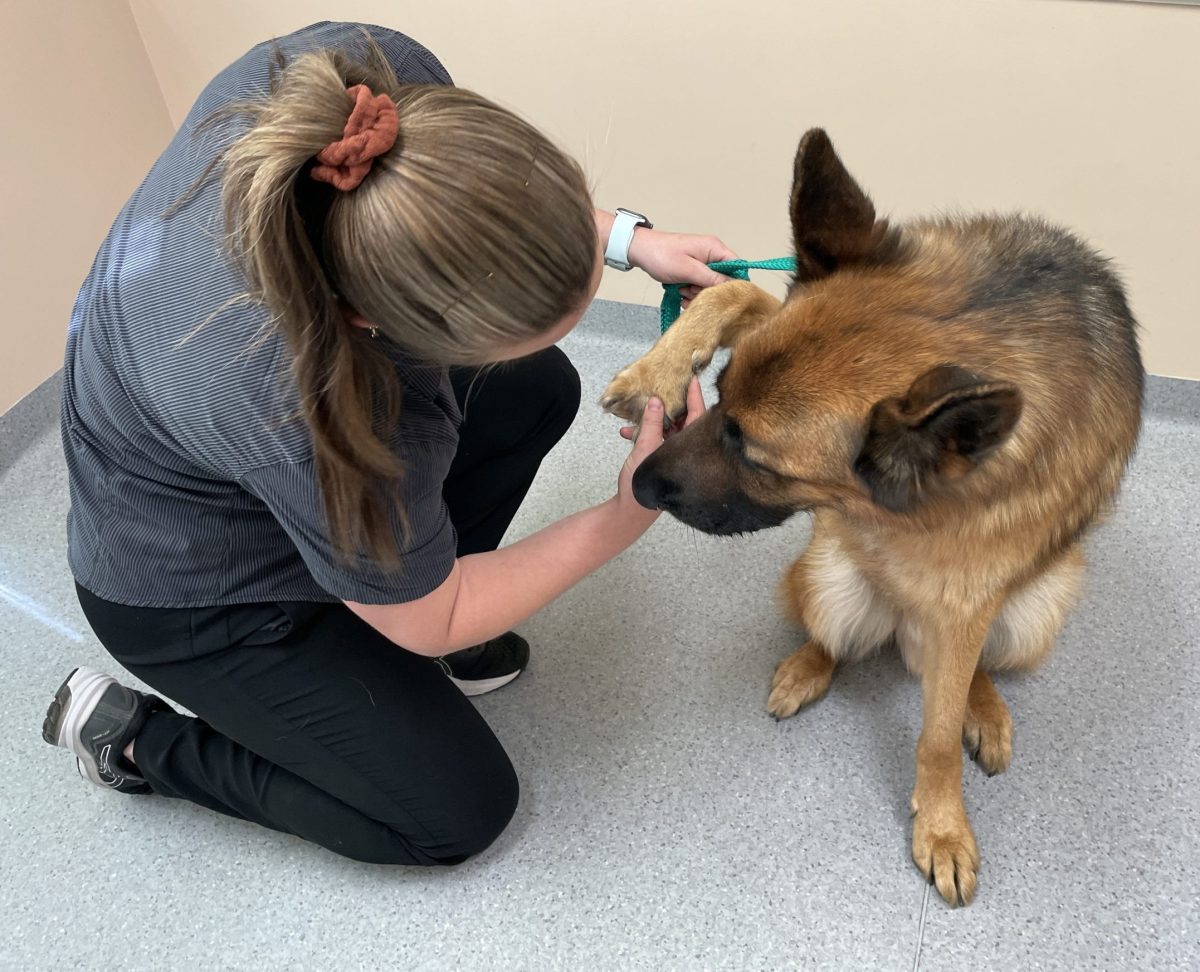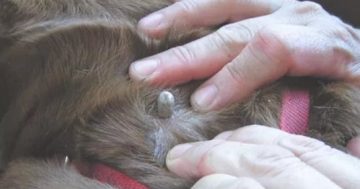
Checking pets regularly for ticks, including ears and toes, reduces their of illness. Photos: Keeli Royle.
They’re a tiny parasite that have a deadly impact on our beloved pets and after a spike in tick cases last year, veterinarians are warning owners to be on extra alert and ensure they have the correct preventions in place to protect their furry family members this spring and summer.
While ticks can be found all year round, particularly with an increase in erratic climate and weather events, Greencross Vet Fairy Meadow director Dr Luke Michel said now is the prime time for cases.
“This is the time of year to be really concerned about it,” Dr Michel said. “It used to be the peak was around the October long weekend when it really started to get busy, but we say August to January is our main tick season.”
Those who live in the escarpment or who have travelled near bushland are particularly at risk, but ticks can be found anywhere that wildlife is able to get to, and cases are arising in pets that haven’t even left their own backyard.
“Sometimes it can even be from sniffing around those bush areas around the beach, so people might think that they just live around the beach so they’re not going to see a tick but there’s certainly plenty of places they can go.”

There are a range of effective tick prevention medications on the market but make sure it is right for your pet.
Recognising the signs could save your pet’s life and help you get them to a vet in time for treatment but Dr Michel said the first indicator may not be anything extreme.
“Often it’s just the case that they’re a bit off, they don’t want their dinner, that’s often the start of it,” he said.
“The most common one is that they’re a bit wobbly in their legs, almost drunk, falling over a little bit or a bit weak and then that progresses and it gets harder and harder for them to walk.”
Paralysis ticks inject a poison that impacts the muscles in your pet’s body and while the physical impacts of this become evident quickly, it can only take a matter of hours before it becomes extremely sinister.
It can also have long-term effects on your pet’s health, and worsen their outcomes if they were to get a tick more than once.
“There’s muscles all around the body not just the ones that help us get around,” Dr Michel said. “There’s the heart, the lungs rely on muscles so breathing becomes difficult, the tube from the mouth to the stomach is a muscle so if it gets weaker they can regurgitate and then get pneumonia so there are all sorts of things that progress over time.”
Thankfully, there is a variety of very effective medications that can stop ticks in their tracks but it’s important that pets are on the correct type and dose for them.
“There’s some really good preventatives now so it’s pretty rare that I see an animal that’s on prevention that has a tick,” Dr Michel said.
“The ones that I do see, it is usually the case of they’ve had the wrong size, so they’ve underdosed, which is quite often in puppies because they’ve had a dose that’s right for them at that time and then they’ve grown so much.”

Dr Luke Michel is urging owners to be on alert this tick season.
But despite the improvement in preventative options, last year vets saw another spike in cases that coincided with a shortage of treatment serum, which put extra pressure on clinics.
And often the reason that more pets were at risk, was simply that owners became complacent or missing doses.
“It’s amazing how quickly a month or three months can go,” Dr Michel said. “People often don’t realise it’s been quite a long period of time so it’s important to set yourself a reminder.”
“Make it easy for yourself, first day of the month, or if it’s three monthly, first day of each season.”
But nothing is 100 per cent effective, so it’s also important to search your pet every day, including around the ears and toes to check for any lumps or abnormalities. As ticks sometimes take days before they inject the poison, removing them early can make a big difference.
“They can go everywhere, they’re more likely to be towards the head than the back end, but they can be anywhere. I’ve seen them in ears, around the bottom, between toes, they can get anywhere on the body so doing a good search getting your fingers through the fur, going against the grain,” Dr Michel said.
“It will feel like a little wart on the skin if you find it and if you get it in the first few days they’re probably not going to get sick.”
While owners can remove the ticks themselves, it is important to contact your vet and seek advice on what to do next and how to stop it from happening again.
Original Article published by Keeli Royle on Region Illawarra.













